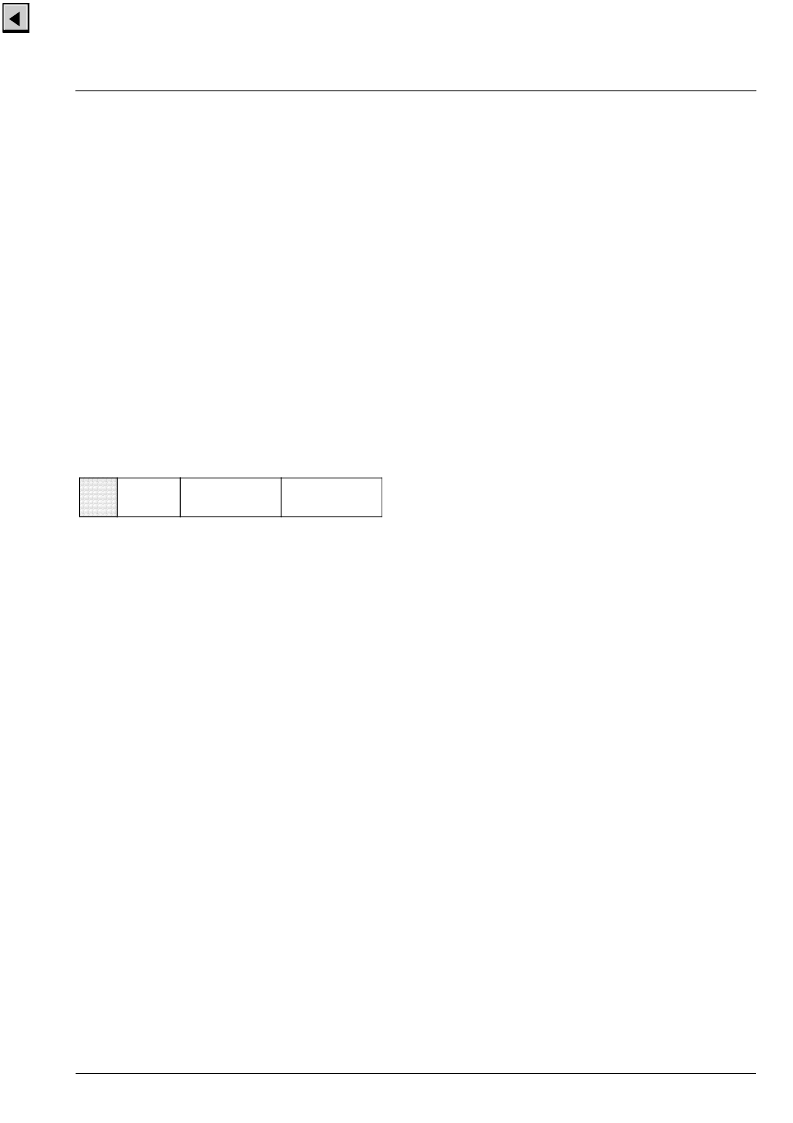- 您現(xiàn)在的位置:買賣IC網(wǎng) > PDF目錄359352 > VCT3801A (MICRONAS SEMICONDUCTOR HOLDING AG) Video/Controller/Teletext IC Family PDF資料下載
參數(shù)資料
| 型號(hào): | VCT3801A |
| 廠商: | MICRONAS SEMICONDUCTOR HOLDING AG |
| 英文描述: | Video/Controller/Teletext IC Family |
| 中文描述: | 視頻/控制/圖文電視IC系列 |
| 文件頁(yè)數(shù): | 83/172頁(yè) |
| 文件大小: | 2243K |
| 代理商: | VCT3801A |
第1頁(yè)第2頁(yè)第3頁(yè)第4頁(yè)第5頁(yè)第6頁(yè)第7頁(yè)第8頁(yè)第9頁(yè)第10頁(yè)第11頁(yè)第12頁(yè)第13頁(yè)第14頁(yè)第15頁(yè)第16頁(yè)第17頁(yè)第18頁(yè)第19頁(yè)第20頁(yè)第21頁(yè)第22頁(yè)第23頁(yè)第24頁(yè)第25頁(yè)第26頁(yè)第27頁(yè)第28頁(yè)第29頁(yè)第30頁(yè)第31頁(yè)第32頁(yè)第33頁(yè)第34頁(yè)第35頁(yè)第36頁(yè)第37頁(yè)第38頁(yè)第39頁(yè)第40頁(yè)第41頁(yè)第42頁(yè)第43頁(yè)第44頁(yè)第45頁(yè)第46頁(yè)第47頁(yè)第48頁(yè)第49頁(yè)第50頁(yè)第51頁(yè)第52頁(yè)第53頁(yè)第54頁(yè)第55頁(yè)第56頁(yè)第57頁(yè)第58頁(yè)第59頁(yè)第60頁(yè)第61頁(yè)第62頁(yè)第63頁(yè)第64頁(yè)第65頁(yè)第66頁(yè)第67頁(yè)第68頁(yè)第69頁(yè)第70頁(yè)第71頁(yè)第72頁(yè)第73頁(yè)第74頁(yè)第75頁(yè)第76頁(yè)第77頁(yè)第78頁(yè)第79頁(yè)第80頁(yè)第81頁(yè)第82頁(yè)當(dāng)前第83頁(yè)第84頁(yè)第85頁(yè)第86頁(yè)第87頁(yè)第88頁(yè)第89頁(yè)第90頁(yè)第91頁(yè)第92頁(yè)第93頁(yè)第94頁(yè)第95頁(yè)第96頁(yè)第97頁(yè)第98頁(yè)第99頁(yè)第100頁(yè)第101頁(yè)第102頁(yè)第103頁(yè)第104頁(yè)第105頁(yè)第106頁(yè)第107頁(yè)第108頁(yè)第109頁(yè)第110頁(yè)第111頁(yè)第112頁(yè)第113頁(yè)第114頁(yè)第115頁(yè)第116頁(yè)第117頁(yè)第118頁(yè)第119頁(yè)第120頁(yè)第121頁(yè)第122頁(yè)第123頁(yè)第124頁(yè)第125頁(yè)第126頁(yè)第127頁(yè)第128頁(yè)第129頁(yè)第130頁(yè)第131頁(yè)第132頁(yè)第133頁(yè)第134頁(yè)第135頁(yè)第136頁(yè)第137頁(yè)第138頁(yè)第139頁(yè)第140頁(yè)第141頁(yè)第142頁(yè)第143頁(yè)第144頁(yè)第145頁(yè)第146頁(yè)第147頁(yè)第148頁(yè)第149頁(yè)第150頁(yè)第151頁(yè)第152頁(yè)第153頁(yè)第154頁(yè)第155頁(yè)第156頁(yè)第157頁(yè)第158頁(yè)第159頁(yè)第160頁(yè)第161頁(yè)第162頁(yè)第163頁(yè)第164頁(yè)第165頁(yè)第166頁(yè)第167頁(yè)第168頁(yè)第169頁(yè)第170頁(yè)第171頁(yè)第172頁(yè)

ADVANCE INFORMATION
VCT 38xxA
Micronas
83
The CPU telegram can be stopped after the 2 memory
address bytes. The following I
2
C telegram subaddress-
ing the data register will continue data transfer to or
from the CPU memory. The data transfer will always
start at the CPU memory address (autoincrement is
not saved).
< 22 78 ah al dd .. >
< 22 79 ah al dd .. >
< 22 79 ah al > < 22 7C dd .. >
Data is directly written into CPU memory without using
the I
2
C buffer of TPU and without waiting for a stop
condition.
3.14.1.2. DRAM Subaddressing
DRAM access is necessary to generate level 2 dis-
plays. The external DRAM can be addressed on byte
level. The maximum DRAM size of 16 Mbit requires a
21-bit memory address pointer. The format of the
DRAM address pointer is shown in Fig. 3–20.
Fig. 3–20:
DRAM address pointer
The DRAM subaddress has to be followed by
3 address bytes defining the DRAM address pointer.
The following data byte is written into this address.
DRAM subaddressing always uses autoincrement.
Separate read and write DRAM address pointers are
saved for autoincrement.
The DRAM telegram can be stopped after the 3 ad-
dress pointer bytes. The following I
2
C telegram subad-
dressing the data register will continue data transfer to
or from the DRAM.
When reading the DRAM, the first data byte the TPU
returns is a dummy byte, which has to be ignored.
< 22 7A ab ah al dd .. >
< 22 7A ab ah al > < 22 7C dd .. >
< 22 7A ab ah al > < 22 7C < 23 dd ..>
Data written to the DRAM subaddress is collected first
in the I
2
C buffer of TPU and is copied to DRAM when
the buffer is full (48 Bytes) or after stop condition. Dur-
ing the time the buffer is copied to DRAM the TPU will
hold the I
2
C clock line down.
Reading data from the DRAM subaddress is also buff-
ered internally. Reading the first byte will only empty the
I
2
C buffer. Every time the buffer is empty, the TPU will
copy 48 Bytes from DRAM into the I
2
C buffer. During
this time the TPU will hold the I
2
C clock line down.
3.14.1.3. Command Subaddressing
TPU supports a command language, allowing the host
controller to start complex processing inside the TPU
with simple commands (see Section 3.12. on
page 68). Commands have to be sent to the command
subaddress.
The command subaddress has to be followed by the
command code. The following data bytes are taken as
command parameters.
The execution time for commands depends on other
processes running inside the TPU firmware, therefore
the host controller has to read the status register to get
information about the running command before read-
ing command parameter or starting other commands.
The status register returns information about the com-
mand interface. The ‘command wait’ bit is set during
execution of a command and is reset when a com-
mand is executed completely and read parameters are
available. If a non-existing command is sent to the
TPU, the ‘command invalid’ bit is set. If a command
could not be executed successfully, the ‘command
found no data’ bit is set. In this case the read parame-
ters of this command are not valid.
Reading status from TPU is done by subaddressing
the status register followed by repeated start condition
and slave read address (see Fig. 3–21).
< 22 7B cc dd .. >
< 22 7D < 23 ss .. >
< 22 7C < 23 dd .. >
Telegrams subaddressing the command interface are
buffered and processed after receiving the stop condi-
tion. Therefore the command code and all necessary
command parameters have to be included in a single
telegram.
3.14.1.4. Data Subaddressing
Writing data to TPU memory is possible by subad-
dressing the data register directly. The data is then
written into memory addressed by the foregoing tele-
gram.
< 22 7C dd .. >
Reading data from TPU is done by subaddressing the
data register followed by a repeated start condition and
slave read address (see Fig. 3–21). The returned data
depend on the subaddress selected in the preceding
TPU telegram.
< 22 7C < 23 dd .. >
5-bit Bank
8-bit High
8-bit Low
相關(guān)PDF資料 |
PDF描述 |
|---|---|
| VCU2133 | High-Speed coder/decoder IC |
| VCX2150A | Surface mount 15.88 mm SQ (.625 SQ) |
| VCX2154A | Surface mount 15.88 mm SQ (.625 SQ) |
| VCXO-105N | VCXO |
| VCXO-199 | VCXO |
相關(guān)代理商/技術(shù)參數(shù) |
參數(shù)描述 |
|---|---|
| VCT3802A | 制造商:MICRONAS 制造商全稱:MICRONAS 功能描述:Video/Controller/Teletext IC Family |
| VCT3803A | 制造商:MICRONAS 制造商全稱:MICRONAS 功能描述:Video/Controller/Teletext IC Family |
| VCT3804A | 制造商:MICRONAS 制造商全稱:MICRONAS 功能描述:Video/Controller/Teletext IC Family |
| VCT3811A | 制造商:MICRONAS 制造商全稱:MICRONAS 功能描述:Video/Controller/Teletext IC Family |
| VCT3831A | 制造商:MICRONAS 制造商全稱:MICRONAS 功能描述:Video/Controller/Teletext IC Family |
發(fā)布緊急采購(gòu),3分鐘左右您將得到回復(fù)。